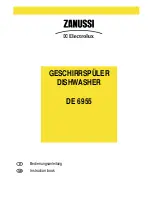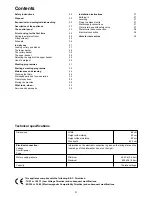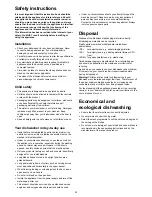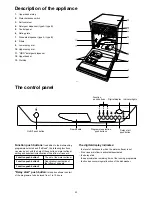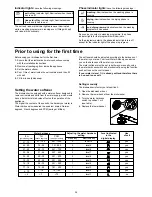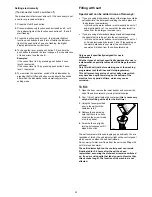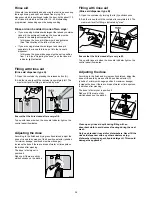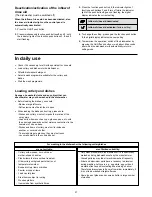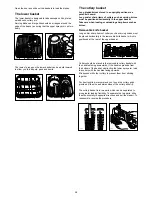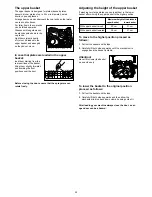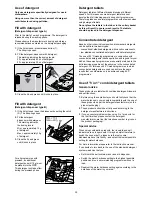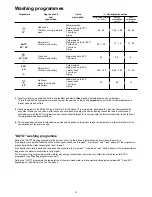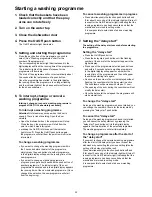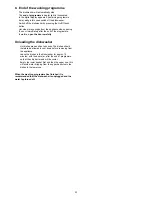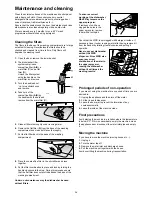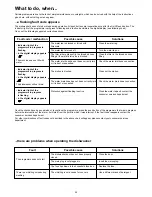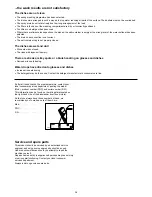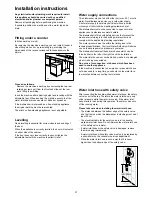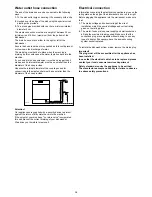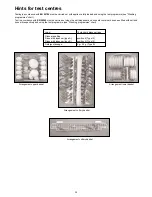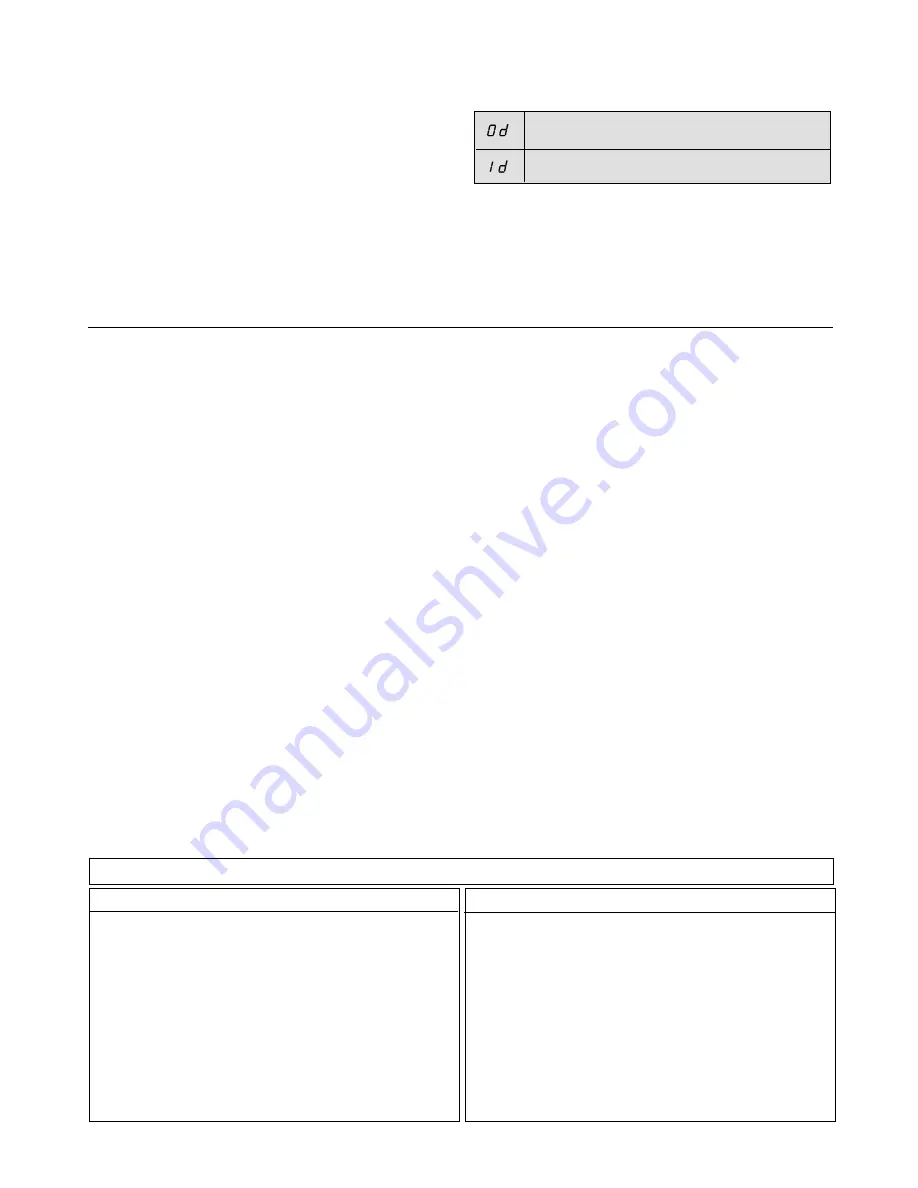
27
Deactivation/activation of the inflow of
rinse aid
(The dishwasher must be switched off)
When the inflow of rinse aid has been deactivated, also
the rinse aid indicator light on the control panel is
automatically deactivated.
1. Press the On/Off push button.
2. Press simultaneously function push buttons 2 and 3, until
the indicator lights of the function push buttons 1, 2 and 3
start flashing.
3. Press the function push button 2, the indicator lights of
function push buttons 1 and 3 turn off while the indicator
light of the push button 2 goes on flashing, the digital
display indicates the current setting.
4. To change the setting, press again the function push button
2, the digital display indicates the new setting.
5. To memorise the operation, switch off the dishwasher by
pressing the On/Off push button or wait about 60 seconds
after which the dishwasher will automatically return to
setting mode.
Inflow of rinse aid deactivated
Inflow of rinse aid activated (factory setting)
●
Check if it’s necessary to refill with special salt or rinse aid
●
Load cutlery and dishes into the dishwasher.
●
Fill with dishwasher detergent .
●
Select a wash programme suitable for the cutlery and
dishes.
●
Start the wash programme.
Loading cutlery and dishes
Sponges, household cloths and any object that can
absorb water may not be washed in the dishwasher.
●
Before loading the dishes, you should:
- Remove large left-overs.
- Soften remnants of burnt food in pans
●
When loading the dishes and cutlery, please note:
- Dishes and cutlery must not impede the rotation of the
spray arms .
- Load hollow items such as cups, glasses, pans, etc. with
the opening downwards so that water cannot collect in the
container or a deep base.
- Dishes and items of cutlery must not lie inside one
another, or cover each other.
- To avoid damage to glasses, they must not touch.
- Lay small objects in the cutlery basket.
In daily use
For washing in the dishwasher the following cutlery/dishes
are of limited suitability:
- Only wash stoneware in the dishwasher if it is specifically
marked as being dishwasher-safe by the manufacturer.
- Glazed patterns may fade if machine washed frequently
- Silver and aluminium parts have a tendency to discolour
during washing. Left-overs, e.g. egg white, egg yolk and
mustard often cause discolouring and staining on silver.
Therefore always clean left-overs from silver immediately, if
it is not to be washed straight after use.
- Some types of glass can become dull after a large number
of washes
are not suitable:
- Cutlery with wooden, horn, china or
mother-of-pearl handles
- Plastic items that are not heat resistant
- Older cutlery with glued parts that is not
temperature resistant
- Bonded cutlery items or dishes
- Pewter or copper items
- Lead crystal glass
- Steel items subject to rusting
- Wooden platters
- Items made from synthetic fibres

